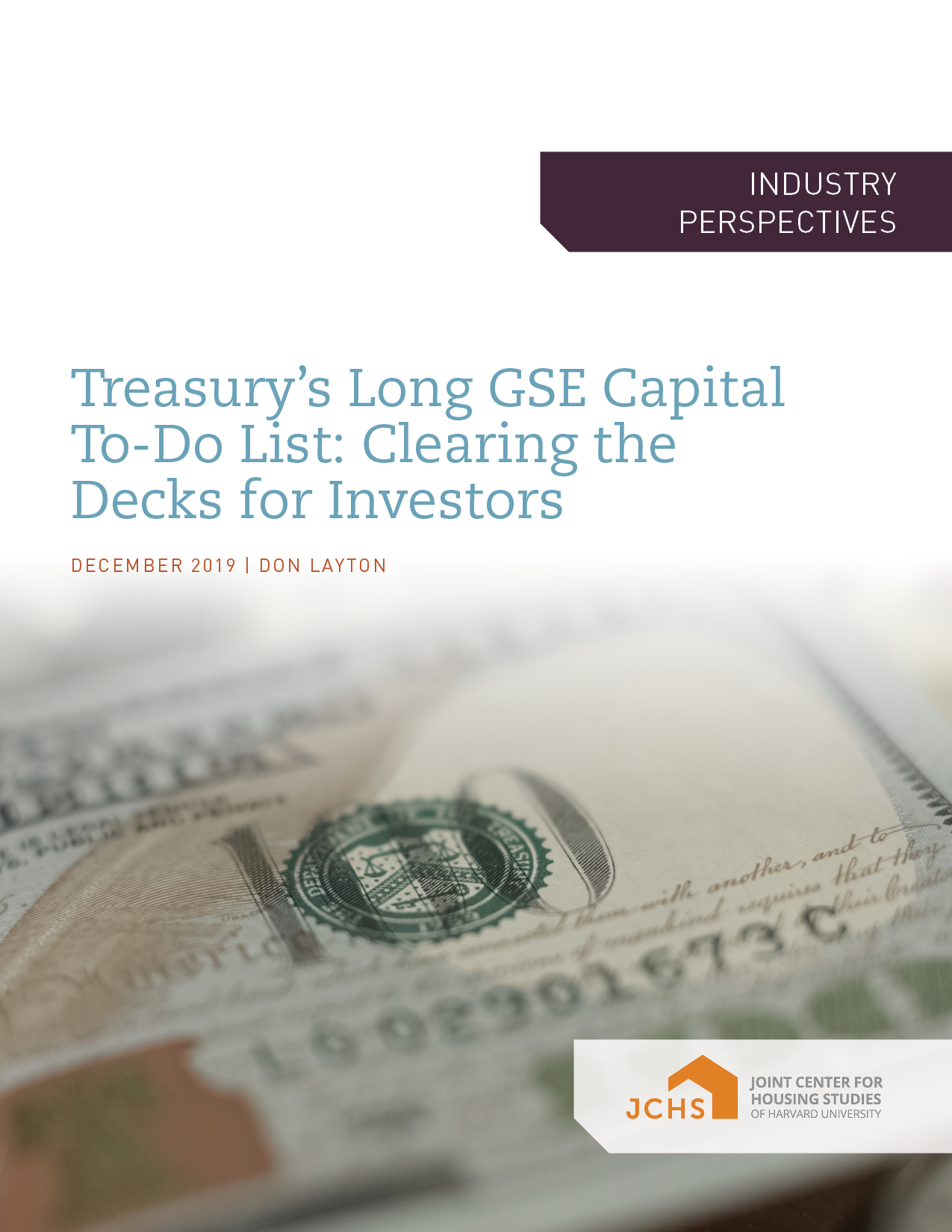Treasury’s Long GSE Capital To-Do List: Clearing the Decks for Investors
As 2019 ends, the two Government-Sponsored Enterprises (GSEs) Freddie Mac and Fannie Mae finally have some momentum in ending their conservatorships, the legal status under which they have operated essentially as wards of the US Government for over eleven years now. Specifically, the Treasury and the Federal Housing Finance Agency (FHFA) have embarked upon ending the conservatorships via administrative means, without any legislation by Congress. For the exit from conservatorship to take place administratively, the big agenda item still to be addressed is capital – in the broadest context, covering a lengthy list of topics. And administrative reform requires that the Treasury and the FHFA collaborate, since both organizations must agree to many of the changes as specified in various legal agreements.
The key insight in this article is that, while the FHFA is appropriately focused on preparing the GSEs to be able to do capital-raising (in addition to retaining earnings) as part of ending conservatorship, Treasury has the main responsibility to address and resolve many issues so that potential equity investors can be ready to make extremely large investments on reasonable economic terms. Without investor-centric issues being cleared up in this manner, there will likely be no equity raises and the GSEs will just keep retaining earnings for years to come. This paper provides a comprehensive – but probably not exhaustive – list of fourteen items that need to be addressed, with Treasury as the focal point.

